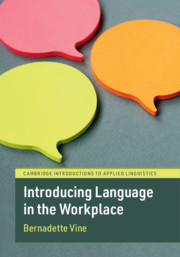Refine search
Actions for selected content:
36807 results in Cambridge Textbooks
6 - Probability and the Central Limit Theorem
-
- Book:
- Statistics for the Social Sciences
- Published online:
- 24 December 2020
- Print publication:
- 17 December 2020, pp 128-151
-
- Chapter
- Export citation
Appendix A6 - χ2-Table
-
- Book:
- Statistics for the Social Sciences
- Published online:
- 24 December 2020
- Print publication:
- 17 December 2020, pp 519-520
-
- Chapter
- Export citation
3 - Models of Central Tendency and Variability
-
- Book:
- Statistics for the Social Sciences
- Published online:
- 24 December 2020
- Print publication:
- 17 December 2020, pp 36-61
-
- Chapter
- Export citation
12 - Correlation
-
- Book:
- Statistics for the Social Sciences
- Published online:
- 24 December 2020
- Print publication:
- 17 December 2020, pp 334-374
-
- Chapter
- Export citation
Appendix A3 - F-Table
-
- Book:
- Statistics for the Social Sciences
- Published online:
- 24 December 2020
- Print publication:
- 17 December 2020, pp 510-512
-
- Chapter
- Export citation
10 - Unpaired Two-Sample t-Tests
-
- Book:
- Statistics for the Social Sciences
- Published online:
- 24 December 2020
- Print publication:
- 17 December 2020, pp 247-281
-
- Chapter
- Export citation
Appendix A4 - q-Table (Tukey’s Post Hoc Test)
-
- Book:
- Statistics for the Social Sciences
- Published online:
- 24 December 2020
- Print publication:
- 17 December 2020, pp 513-515
-
- Chapter
- Export citation
Answer Key
-
- Book:
- Statistics for the Social Sciences
- Published online:
- 24 December 2020
- Print publication:
- 17 December 2020, pp 542-556
-
- Chapter
- Export citation
9 - Paired Two-Sample t-Tests
-
- Book:
- Statistics for the Social Sciences
- Published online:
- 24 December 2020
- Print publication:
- 17 December 2020, pp 220-246
-
- Chapter
- Export citation

Introducing Language in the Workplace
-
- Published online:
- 16 December 2020
- Print publication:
- 11 June 2020
-
- Textbook
- Export citation

Water Resources and Hydraulics
-
- Published online:
- 16 December 2020
- Print publication:
- 07 January 2021
-
- Textbook
- Export citation

Natural Language Processing
- A Machine Learning Perspective
-
- Published online:
- 16 December 2020
- Print publication:
- 07 January 2021
-
- Textbook
- Export citation

An Introduction to Community and Primary Health Care
-
- Published online:
- 15 December 2020
- Print publication:
- 30 November 2020
-
- Textbook
- Export citation

An Introduction to Japanese Society
-
- Published online:
- 10 December 2020
- Print publication:
- 12 November 2020
-
- Textbook
- Export citation
14 - Complex Systems
- from Part III
-
- Book:
- Modern Classical Mechanics
- Published online:
- 30 November 2020
- Print publication:
- 10 December 2020, pp 575-616
-
- Chapter
- Export citation
7 - Gravitation
- from Part II
-
- Book:
- Modern Classical Mechanics
- Published online:
- 30 November 2020
- Print publication:
- 10 December 2020, pp 275-313
-
- Chapter
- Export citation
E - A Brief on Special Polynomials
- from Appendices
-
- Book:
- Modern Classical Mechanics
- Published online:
- 30 November 2020
- Print publication:
- 10 December 2020, pp 676-677
-
- Chapter
- Export citation
15 - Seeds of Quantization
- from Part III
-
- Book:
- Modern Classical Mechanics
- Published online:
- 30 November 2020
- Print publication:
- 10 December 2020, pp 617-654
-
- Chapter
- Export citation
9 - Accelerating Frames
- from Part II
-
- Book:
- Modern Classical Mechanics
- Published online:
- 30 November 2020
- Print publication:
- 10 December 2020, pp 358-394
-
- Chapter
- Export citation
Preface
-
- Book:
- Modern Classical Mechanics
- Published online:
- 30 November 2020
- Print publication:
- 10 December 2020, pp xiii-xvi
-
- Chapter
- Export citation
